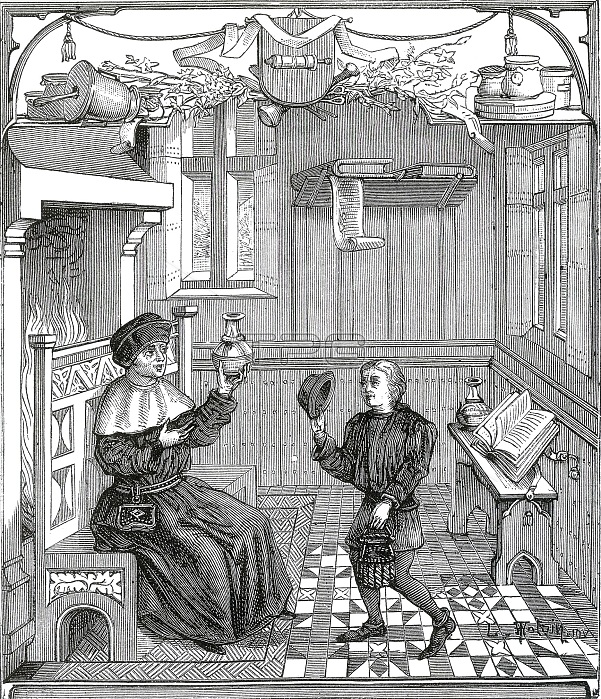
Uroscopy was important to the Roman and Byzantine eras, because it allowed doctors to diagnose patients without technology. This was an era in which there was no microscope, stethoscope, or even thermometers. All that was needed was a uroscopy wheel, uroscopy flask, and an experienced doctor to be able to give a diagnosis. It was a very simple procedure that a doctor could determine a patients problem by simply tasting and/or looking at their urine. In medieval medicine, uroscopy was an important diagnostic tool, urine having 29 attributes to be observed. From this the physician deduced the supposed levels of a patient's four humors (bodily fluids): blood, yellow bile, black bile and phlegm. Illness was thought to be due to an imbalance in these fluids. It was thought that the imbalance could be redressed by changing the patient's diet, prescribing medicine, by bleeding the patient or by surgery. By modern medical standards, uroscopy is considered to be a very limited means of obtaining evidence for the correct diagnosis of a patient's condition. In addition, many of the assumptions made by ancient physicians regarding uroscopy have proved to be quite incorrect and unscientific. In many places the urine flask became the symbol of the doctor. No artist credited, dated 15th century.
| px | px | dpi | = | cm | x | cm | = | MB |
Details
Creative#:
TOP22153230
Source:
達志影像
Authorization Type:
RM
Release Information:
須由TPG 完整授權
Model Release:
N/A
Property Release:
No
Right to Privacy:
No
Same folder images:

 Loading
Loading